What's next for parenting tech?
A boom in tech investment for families is paving the way for products that promise to cater to almost every need. What's emerging over the horizon?
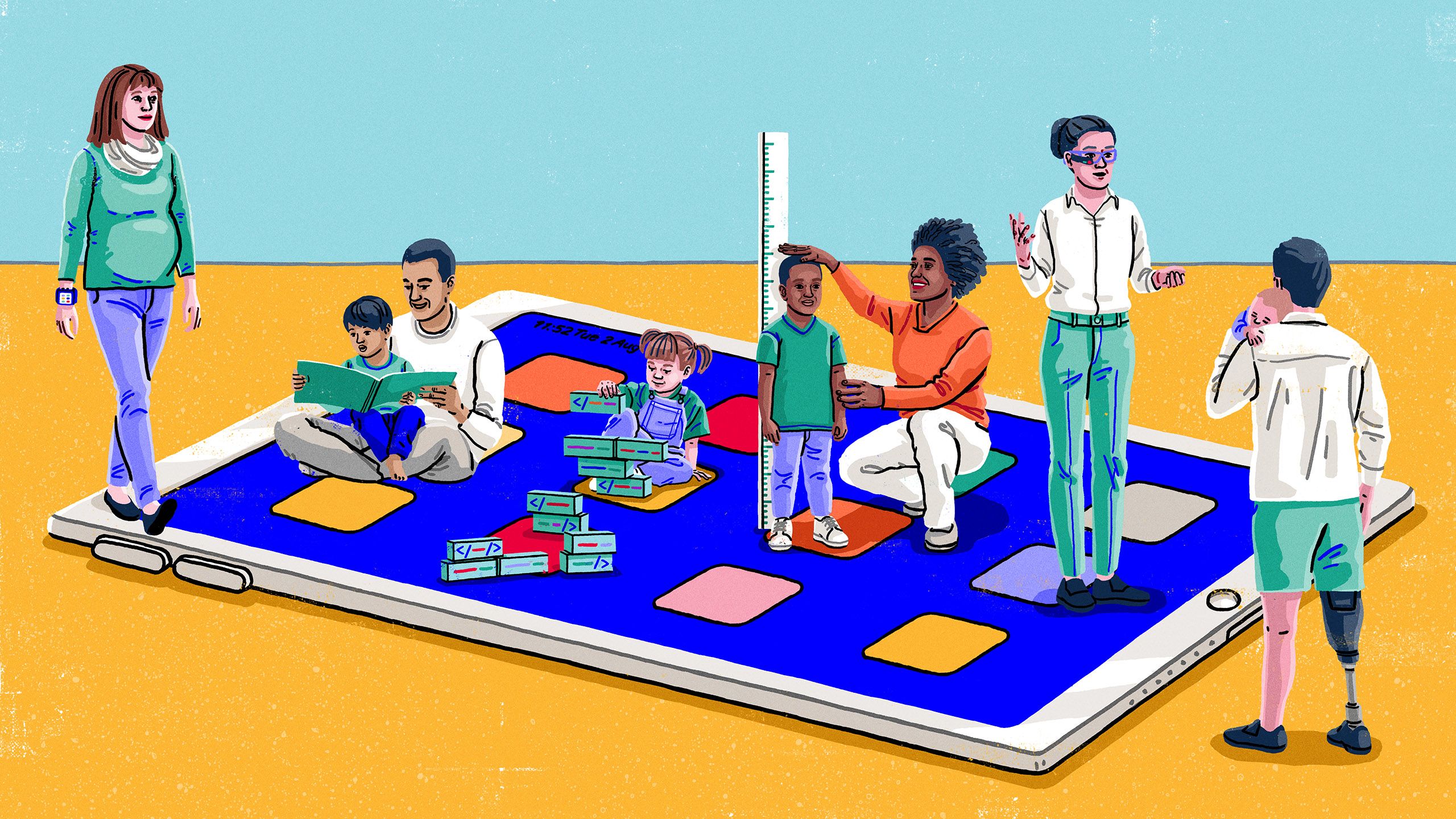
In the modern home, parenting takes place in an increasingly technology-rich environment. Our recently released snapshots of the market for apps for toddlers and their parents illustrate the breadth of products and services available to families via smartphones and tablets. But which new technologies might find their way into homes in coming years and what potential might these have for supporting children’s development?
We started by following the money to find some cues. We looked at the flow of venture capital (VC) into companies working on products for parenting and early years education. This helped us to spot innovations that are emerging but sufficiently developed to attract meaningful investment.
We found a ‘next generation’ of products offering assistance with a surprisingly diverse range of parenting tasks, from rocking children to sleep to boosting their language skills and helping them learn to read. Some of these apps, products and services are already available to buy or download.
First, we’ll take a look at the trends underpinning the parenting tech boom. Next, we'll outline the four broad clusters of products which are emerging. We speculate about how these might be used in the home in future, including some of the possible benefits and the risks of applications which should arguably be attracting further scrutiny. Finally, in an investment trends 'deep dive', you can explore some of the broader patterns we identified in the VC investment space.
The trends underpinning the parenting tech boom

An upsurge in early stage investment
The wave of innovation in parenting technologies has been enabled by the significant increase in VC investment over recent years. Since the early 2010s, we estimate that global yearly investment in early years education and parenting startups has grown 15-fold and, more recently, it increased by 40% from 2020 to 2021 (see more on these trends in our appendix on investment). This could be related to an increase in women-led funds; a decade of ever-increasing venture capital fuelled by low interest rates boosting tech investment in general; and the pandemic bringing attention to the home environment. However, despite a record-breaking year in 2021, VC investment more generally is now slowing down, with global funding in May 2022 at 20% less than the previous May.
Technological advances and falling costs
Technologies that were previously out of reach are finding their way into mainstream consumer products. Developments in artificial intelligence (such as speech recognition algorithms), wearable sensors and the Internet of Things have paved the way to new kinds of functionality. Smart speakers that can retrieve data from the internet have created an affordable way to access content curated by smart algorithms. This has extended the range of parenting needs that it is possible for product designers to cater for.
Working parents feel the time squeeze
The proportion of parents working continues to increase and, at the same time, parents are spending more time with their children than ever before. Managing these dual pressures can be challenging and cause parents to feel anxiety about their ability to parent when under time pressure. Services promising support with parenting tasks have sprung up in response to this time deficit, including ones which offer busy parents help to remove head lice, select a nursery or school and teach children to ride a bike or use a potty.
The rise of the parenting industry
Related to the above trend, many parents are increasingly feeling under pressure to become experts in nutrition, sleep, literacy development and mental health. This need is being met (and partly fuelled) by a burgeoning parenting expertise industry. There are more than 40,000 parenting books on Goodreads. Some of the leading parenting advice influencers have millions of followers on Instagram: clinical psychologist Dr Becky has 1.2 million and Big Little Feelings has 2.6 million. But this wealth of advice might not always translate to more assured parents – one study found that parents felt more depressive symptoms and stress for each book on parental routines they read.
The four parenting product clusters to watch

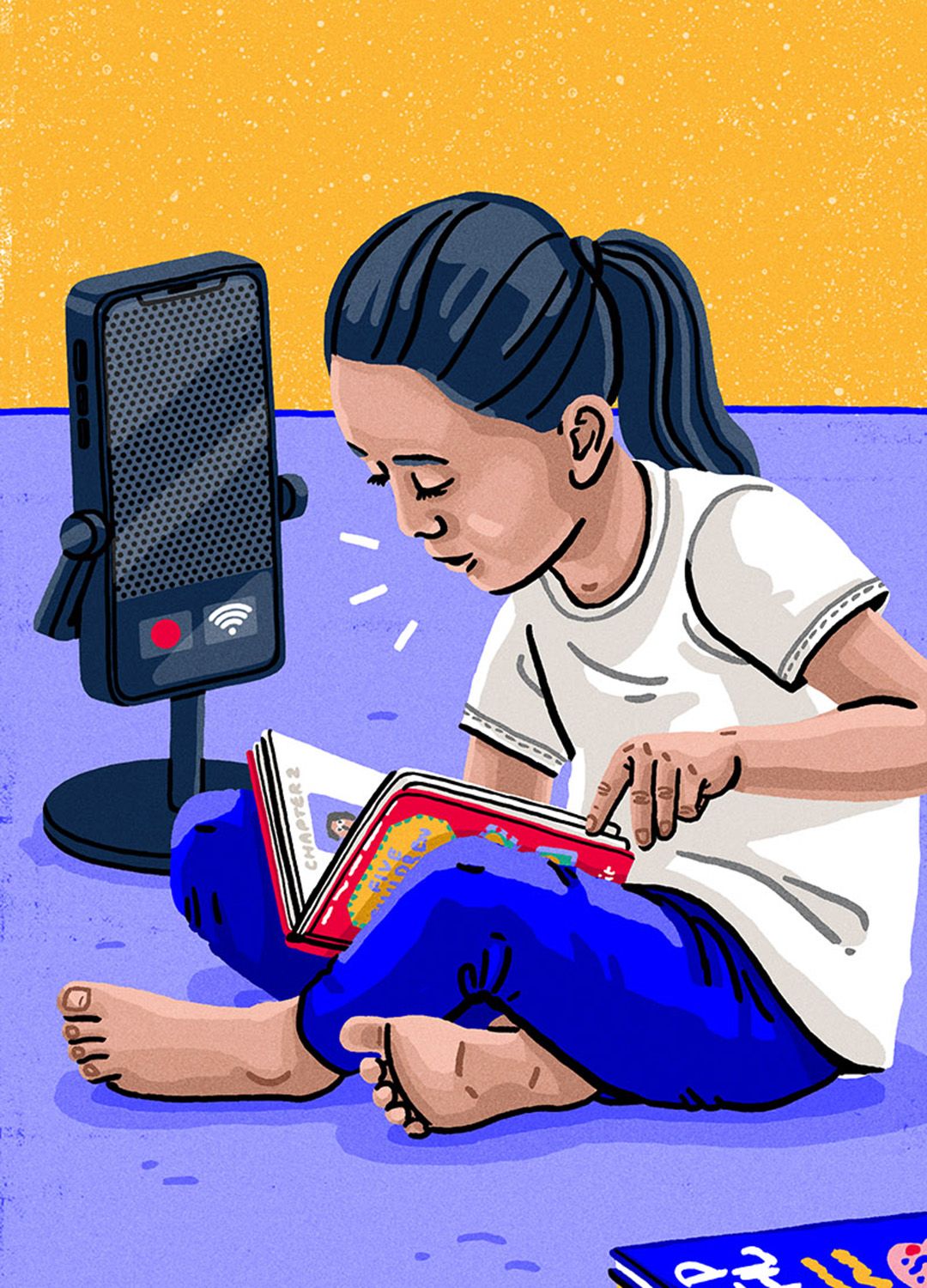
Speechtech for language development
The first few years of a child’s life are a time of concentrated learning and there is evidence that early and rapid learning of vocabulary is related to school readiness later on. There is also value in identifying speech and language problems early on for children with additional needs. However, there is some evidence that some parents struggle to access the right help for their child.
Now: Algorithms that allow computers to understand language have improved rapidly, whilst speech recognition software companies are claiming they can transcribe children’s speech with 96% accuracy. Products such as Lena, Wordle and Wunder promise to listen in on conversations at home, measure the number of words a baby hears, and give personalised tips on how to improve their development. Apps like Ello or Bookbot can listen to a child reading a book and help with mispronounced words.
What next? In future, smart microphones could become more widely used to guide children through tailored activities and games to help build language skills. They could model correct pronunciation in conversation, aid their reading or even support the diagnosis of speech impairments. This would need to be carefully researched and monitored, as human interaction is vital to children’s social, emotional and language development.
Interactive apps with avatars that can understand and speak to children might be used to support the work of teachers in preschools. At home, devices could in future be used to monitor the tone with which parents speak to their children and even assess the wellbeing of each member of the household, giving prompts on resting or getting medical advice. This might support the work of professionals such as health visitors or speech therapists to boost healthy familial relationships and communication styles. However, such pervasive technologies could generate a host of privacy and ethical concerns, particularly if families feel pressure to participate or share any ratings of their child’s ‘language environment’.

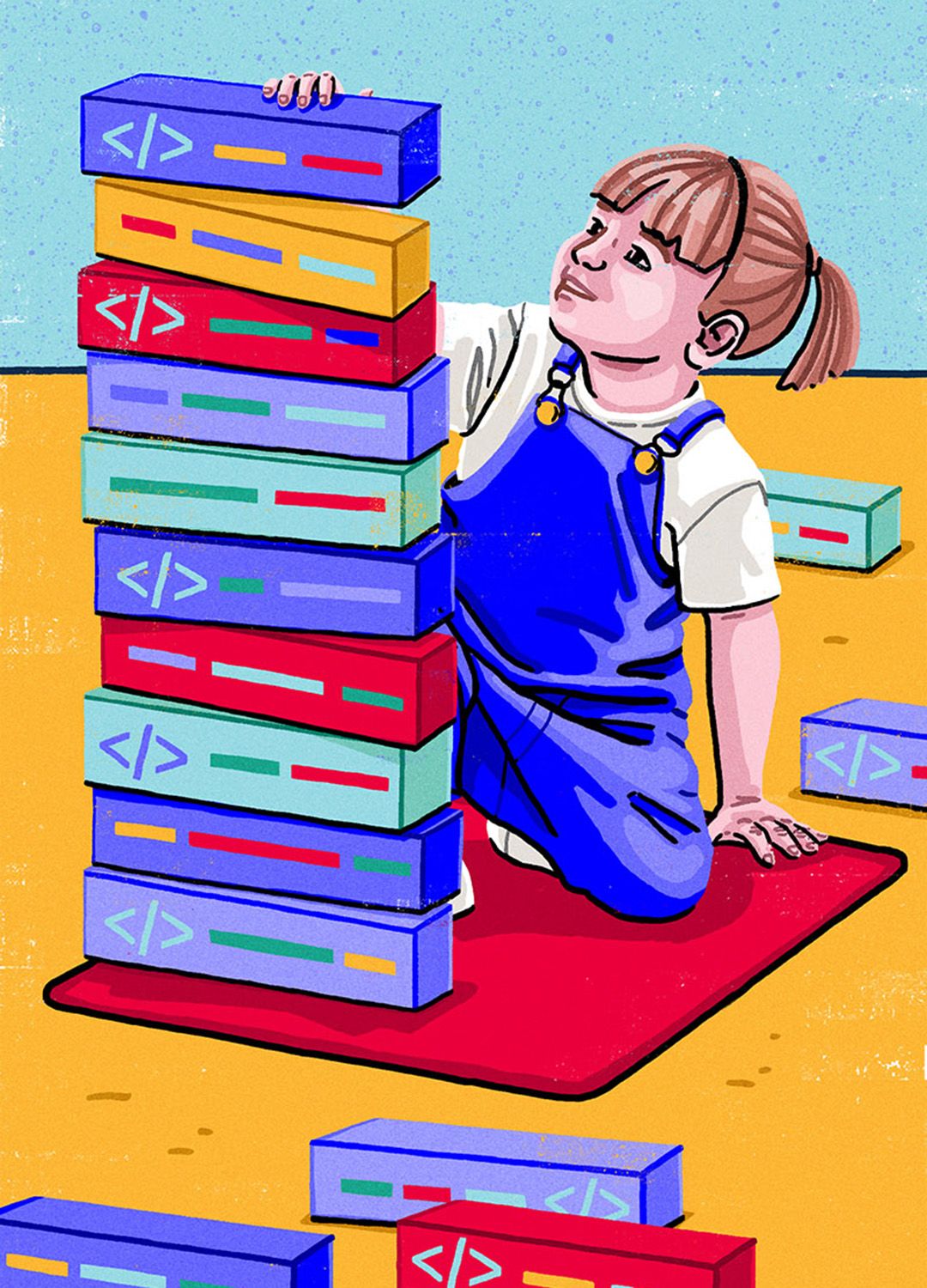

Toys that teach specialist skills
The growing salary gap between low- and high-income jobs could be increasing pressure on parents to consider their child’s employability ever-earlier. Specialist tech skills are currently highly prized in the market, with web and software development jobs among the highest paid. Other skills such as fluency in foreign languages could also improve employability.
Now: Parents with higher incomes are able to invest a far greater amount in their children’s formal education. There is also a long history of toys being marketed to parents which promise to ignite an interest in science or encourage role-playing as high-status professionals such as doctors or vets.
Building on this established trend, a range of educational products has been designed to help parents guide their children towards in-demand employment sectors. Toys like LoCoMoGo and Botley help young children understand the basics of coding to get a head start in the digital sector. Cubelets teach children as young as four how to build robots. Storytelling and games are used by Kide Science to teach science problem solving skills and by BOOKR to teach languages. Whilst smallTalk plays foreign lullabies to accelerate language learning, allowing a baby to request another lullaby using a sensor embedded in a pacifier.
What next? Toys that develop specific skills might in principle support long term career development, but selecting the ideal skill for a child to develop is likely to prove a challenge because of the pace of change in the job market. Parents might strike lucky and steer their child towards a sector that is booming when they reach employment age, but they might also find themselves out of step with labour market trends. Software development is one good example of this risk, as algorithms are quickly automating elements of the work and no-code programming is expanding.
Advances in this field may encourage children to progress within competitive sectors, but there are risks of steering them towards premature specialisation and a preoccupation with developing marketable skills.
There could also be a shift away from toys linked to specific vocations or fields. Manufacturers might increasingly opt to develop toys that are explicitly marketed on the basis of cultivating so-called 21st-century skills such as problem-solving and creativity. These toys could also collect data on a child’s performance, introducing them to ‘continuous assessment’, which may become increasingly prevalent in schools and workplaces.
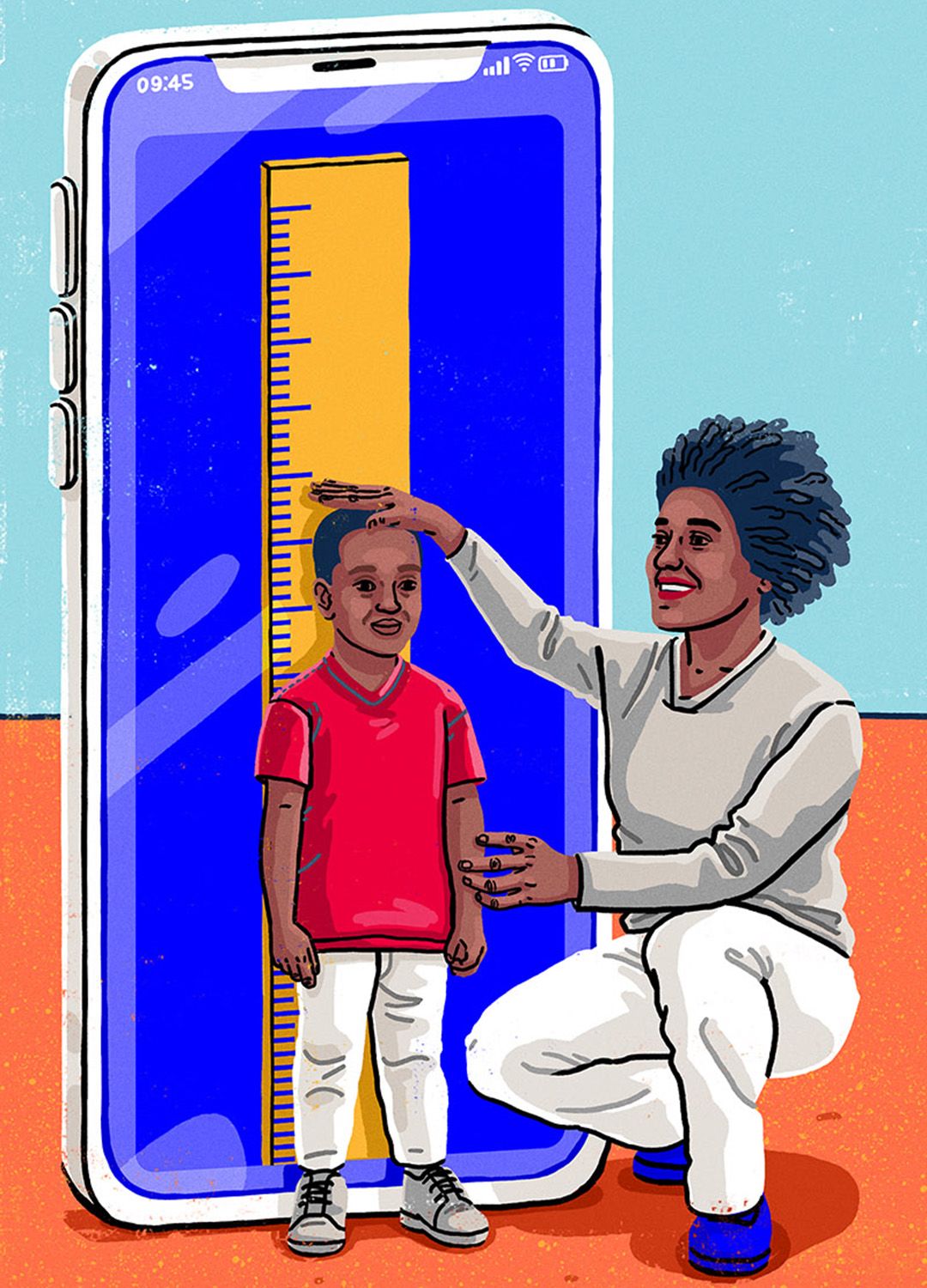
Continuous monitoring
Parents of young children have increasingly been encouraged by professionals and the media to be vigilant about the causes of childhood illnesses. In many respects, this has made children far safer. For example, mortalities from sudden infant death syndrome have decreased by 81% since the Back to Sleep campaign launched in 1991, which advised parents to put their babies on their backs while sleeping.
But greater awareness of health risks and also crime can distort parental perceptions of risk. New technologies bring opportunities for parents to respond to such anxieties with more pervasive monitoring. As children get older, their own participation in the digital sphere also poses new risks to be managed.
Now: Parents can monitor large volumes of information about their child, such as using smartphone apps and smart watches to track their location. Apps such as ParentPal and Nurturey allow parents to track their child’s development through hundreds of milestones, using AI to identify potential delays and other issues. Smart sock Owlet is designed to monitor a baby’s vital signs, and smart baby bed Cradlewise provides a gentle rocking motion and uses audio and video to track sleep patterns.
Apps aimed at children also come with downsides: some have already been found to share children’s personal information with advertisers, including their location, interests and likelihood of making purchases.
What next? Unless they proactively opt out, parents may find themselves defaulting to a system of continuous tracking and monitoring powered by wearable technology, AI-powered cameras and even smart furniture. This could help them gain in-depth insights into their child’s development in minute detail, optimising nutrition choices, exercise, and educational activities. For researchers and educators, ‘always on’ monitoring could generate a wealth of data around patterns of child development.
However, quantifying so much of a child’s life presents a privacy risk as they age. This information could help advertisers and other companies build up highly detailed profiles based on sensitive information. Constantly monitoring the health of a child could also contribute to parental anxiety, worsening mental health at a time when eight out of ten parents in the UK already show warning signs of parental burnout due to the pandemic. Tracking a child’s location could also hinder the development of a trusting parent-child relationship, a necessary condition for children to feel confident and secure.
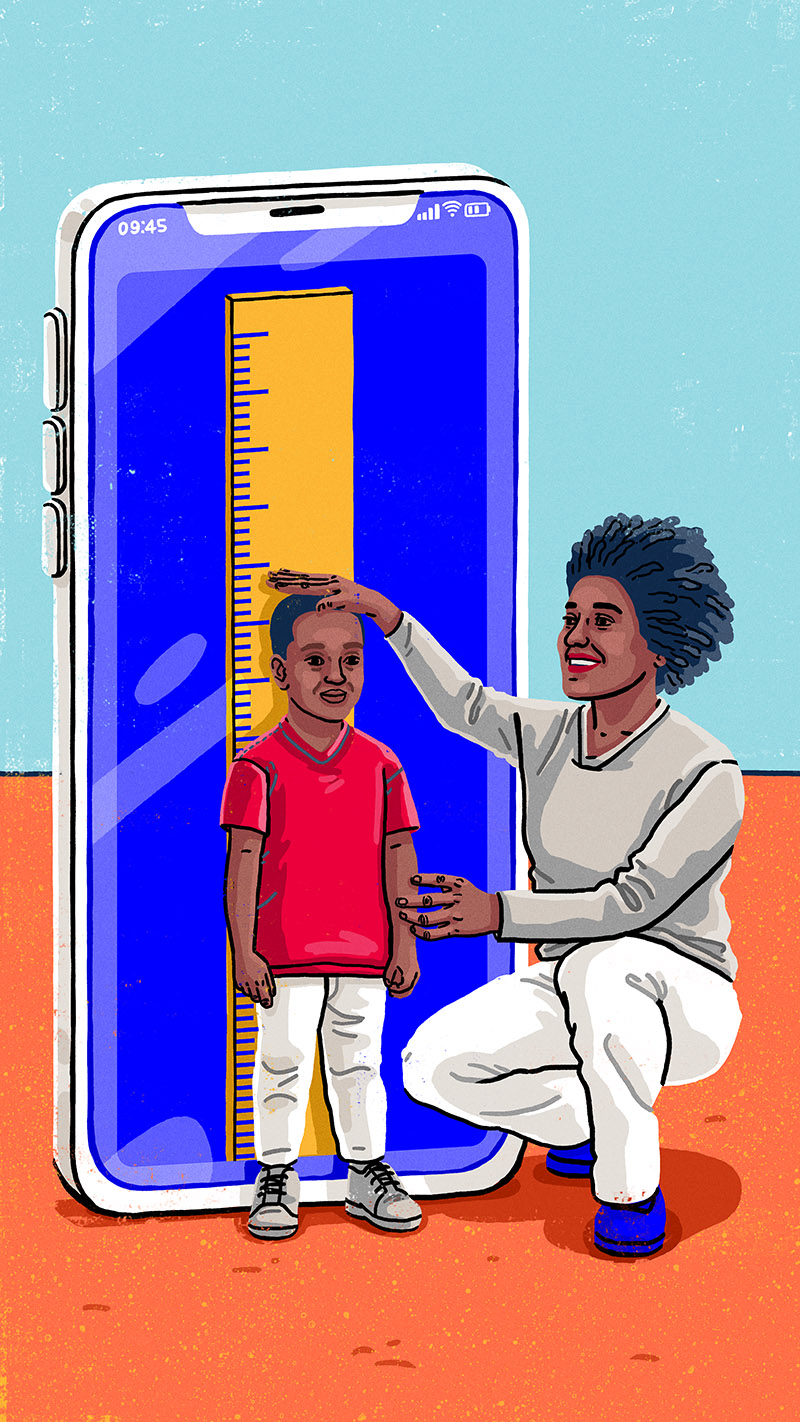
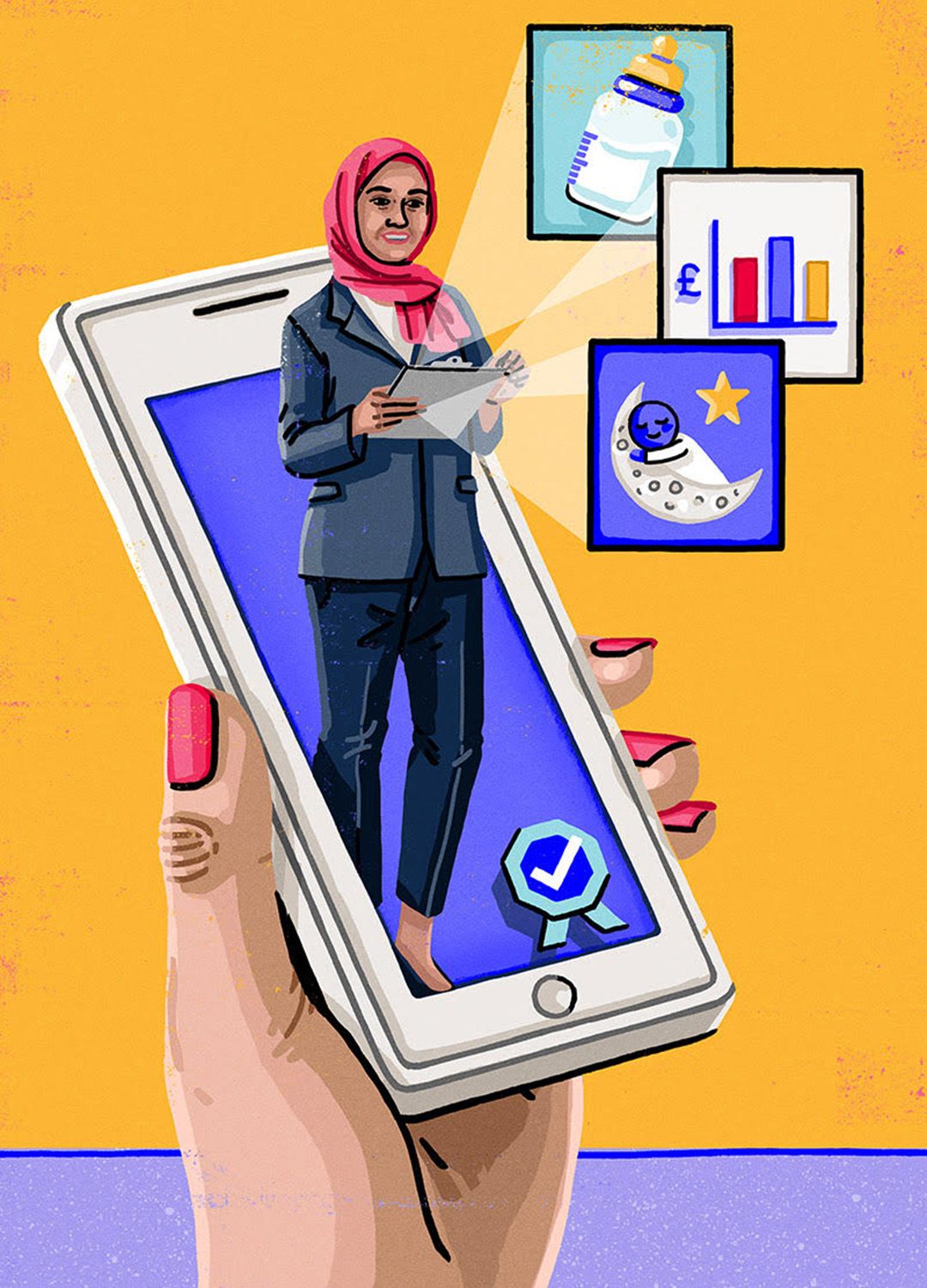

On-demand parental expertise
The volume of parenting advice available to families has increased with the rise of social media and ‘momfluencers’ adding to the range of books, TV programmes, podcasts and classes already on offer. Whilst such a wealth of information is challenging for parents to process, emerging technologies could change the way it is delivered, making it more navigable and tailored to the task at hand. In particular, chatbots powered by AI are getting better at understanding questions and responding with tailored information.
Now: Services such as Batelle Sleep School promise to have your baby sleeping through the night within two weeks, using lights and white noise to comfort them. Apps such as EasyPeasy provide personalised parenting tips and activities, and apps including Maple help parents to plan meals, remember appointments and track expenses. Kami allows direct access to parenting experts, while Peanut connects existing and aspiring mothers with each other for peer support.
What next? As AI develops, apps could provide timely, immediate and tailored advice to parents based on their child’s age and other characteristics. This could include suggestions for how to respond to children’s behaviour, setting boundaries, or giving emotional support. Parents could even choose a style such as gentle parenting or attachment parenting and receive advice corresponding to their preferred approach. The smart speakers that are already positioned in many homes could make accessing this kind of information as easy as asking a question out loud.
Parenting advice apps could provide care-givers with reassurance that their child is healthy, by planning meals with a particular nutritional profile. They could even support the development of children’s social skills though scheduling after-school activities and matching them with potential friends locally.
However, AI algorithms could uncritically start selecting advice based on fads or extreme schools of parenting, or could misunderstand requests from parents. Without any human vetting for quality, the advice offered could be incorrect or even dangerous, undermining parental confidence over the long term.
A future that must be shaped
Our exploration of this area suggests there is scope for technology to become more embedded into many aspects of parenting. However, the future path of these technologies is not inevitable, not least because of uncertainty around the continued availability of VC funding linked to the global slowdown in 2022. This could stall innovation in the field of parenting tech as startups will find it harder to attract new investment in the near term, and there will be a need to cut costs including research and development spending ahead of a possible ‘VC winter’. Many of the commercial models in this sector are yet to be proven and not all promising new products and services will find a sustainable market.
As highlighted in our research on toddler and parenting apps, there could be exciting opportunities to use digital technologies to narrow the school readiness gap between children from poorer families and their better-off peers, an aim aligned with Nesta’s fairer start mission. To help parents and practitioners get the most from them, more robust evidence must be built on the effectiveness of those technologies on children’s social, emotional and cognitive outcomes. We will also need to navigate the potential risks posed by these technological advances.
Firstly, privacy is always a significant concern for emerging technology aimed at children or parents. While the UK’s age-appropriate design code explains that online services should enact a duty of care to children and protect their privacy, these products and services are evolving rapidly and could outpace existing legislation. Regulation will need to be continuously reviewed to ensure it is sufficiently ‘anticipatory’ in the context of highly sensitive data about children and families.
Secondly, the development of these high-end, sophisticated technologies and services could also compound educational inequality. Given the squeeze on household incomes, it seems unlikely that children in low or middle income will stand to benefit considerably from these products in the near term. Parents should also be supported to navigate the market and identify the highest quality digital tools, to level the playing field for families. Additional targeted investment from local or central government may be needed to ensure that the families who can benefit most from new technologies are able to access them.
Exploring these risks now will position us to better shape the development of these technologies before they become 'part of the furniture’ in homes.
Deeper dive: Venture capital trends

A key source of insights for this article on emerging technologies for toddlers and parents was venture capital investment data. Venture capital is an important component of the innovation ecosystem by providing capital for high risk ideas that need to be tested in the real world. This is evidenced, for example, by research showing that venture-backed firms account for a large fraction of research and development spending in the US.
Nesta is a venture capital investor looking for opportunities to back commercially successful businesses that deliver our social impact goals - in this case closing the education attainment gap. If you are innovating within this space and are looking for early stage investment, apply for funding from Nesta Impact Investments.
This section builds out a fuller picture of the investment trends identified from our analysis of the flow of venture capital into products aimed at parents and children.
Growing levels of early years venture capital
At the global level, we observed growing venture capital investment into companies working on innovations that support parenting and early years education (0-5 year-olds). Since the early 2010s, we estimate that global yearly investment in such start-ups has grown about 15-fold, reaching more than £1 billion in 2021. This growth has occurred in the context of the generally steep rise of global venture capital funding during the past decade, reaching about £420 billion in 2021. That is roughly double the amount invested in 2020, and about 10 times more than a decade ago.
This indicates a strong trend of capital flowing in this space and setting the scene for innovations to flourish and potentially scale to millions of parents and children.
Early stage investments (eg, seed, series and crowdfunding)
Source: Nesta’s analysis of Crunchbase business intelligence data.
Digital technologies on the rise
Among the digital technologies that have seen the highest growth in investment in the past five years, machine learning tops the list with an impressive 3,500% growth (examples include SoapBox Labs, which is developing speech recognition algorithms for children, and robotics company Miko). This is followed by e-books with 1,500% growth (eg, Epic which was acquired by Byju in 2021) and online portals with 1,400% growth. Mobile technology categories such as apps, both Android and iOS, have also exhibited strong growth of around 200% as well as relatively large magnitude of investment.
Some technologies are just emerging, and have relatively small investment amounts but strong growth. For example, we find rising investment into companies leveraging the Internet of Things (340% growth), such as Cradlewise which has developed a smart crib or smallTalk which claims that its smart pacifier facilitates brain development. Similarly, the investment into the augmented reality category has grown by 310% (examples include Devar and PleIQ which create early years learning experiences).
These trends suggest that mobile apps, machine learning and other emerging technologies might become more commonplace in products and services designed to support parents and children.
Estimates of investment growth into parenting and early years education companies in the past five years (2017-2021)
Source: Nesta’s analysis of Crunchbase business intelligence data. Circle size indicates average yearly investment between 2017 and 2021. Growth is a smoothed estimate that compares the rolling three-year average in 2017 vs 2021. The analysis leverages Crunchbase’s company industry tags and as such is influenced by how Crunchbase is tagging companies and how companies are self-reporting their activity. Note that these tags might be related and not mutually exclusive (eg, 'mobile apps' and 'apps'); a company can be associated with multiple tags. To reduce spurious trends, we’re using only tags for which we could identify at least five parenting or early years education companies, and at least 10 investment rounds in 2017-2021. We’re also excluding the generic 'internet', 'software', 'information technology’, 'edtech' and 'e-learning' tags. The final graph shows 15 digital technology tags with the highest estimated growth.
Where is innovation happening?
In terms of investment into parenting and early years education companies, China and the US are leading by a significant margin. Companies based in these countries account for about 44% (China) and 40% (USA) of the global venture capital investment between 2017 and 2021. This is followed by India, the home of the edtech giant Byju, which has teamed up with Disney to create an early learning offer for young children. The United Kingdom comes in fourth place.
Investment in the past five years (2017-2021) by countries where the companies are based
Source: Nesta’s analysis of Crunchbase business intelligence data.
Among these four countries, the United States has shown the strongest growth (260% relative growth in investment between 2017 and 2021) followed by India (160%) and the UK (130%). Investment growth in Chinese companies appears more modest at around 15%, owing to pre-existing growth which took place in the mid-2010s and potentially the recent curbing of the private tutoring industry.
Overall, this finding echoes previous assessments of the wider edtech investment landscape, which have found China playing a leading role, partly due to the size of the market and state support for the sector. As other countries are catching up, these results suggest that the UK should seek lessons from the innovators in the US and India and aim to understand and replicate the conditions that are spurring growth in these markets.
Important information
This document has been drafted by Nesta's Discovery Hub and is not an investment recommendation or financial promotion; it is our analysis on general trends in parenting technology and associated venture capital investment. The products and services named within this article are cited purely as examples which help to demonstrate the breadth and depth of products available and their inclusion should not be interpreted as an endorsement by Nesta. We make no representations as to the data security, reliability or otherwise of any of these products or services outlined within and readers should refer to the separate privacy notices for particular providers, as appropriate. None of this content should be construed as parent/carer advice or solutions and readers should make their own decisions as to whether a particular app or service may be suitable for them or their children.
Methodology
To analyse venture capital trends, we used the Crunchbase business intelligence database. To identify companies related to parenting and early years education, we used labels assigned to companies on Crunchbase as well as their text descriptions. For example, we selected all companies that have the label 'parenting'; we also selected companies that have keywords such as 'preschool' in their description. The full selection criteria can be found on GitHub.
Among the companies selected by our labels and keywords, we considered companies that have recorded at least one investment round on Crunchbase. We also manually reviewed the companies to only select those that are likely to be relevant to early years (ie, for 0-5 year olds) and excluded those focusing solely on products and services for older children. If a company had products or services for both younger and older, school-age children, we included them. However, it is not possible to discern what fraction of the investment is specifically for developing early years products. The final list of companies considered in this analysis can be found in this spreadsheet.
In the figures reported above, we considered only early stage deals (eg, seed, crowdfunding and series) and excluded late stage deals such as post-IPO investments. The late stage investments are characteristic to more mature companies and can have very large amounts that would skew the investment trends.
It is important to note that the analysis largely relies on the company labels on Crunchbase, which we do not expect to be fully complete. For the digital technology tags, the growth estimates might also be influenced by popularity and maturity of the technologies. For example, tags like 'internet’ or ‘information technology’ are likely becoming redundant as most companies depend on these technologies and they do not serve as reliable differentiators anymore.
Acknowledgements
We extend our thanks to Mat Hickman for fruitful discussions about parenting technology analysis, Jack Rasala for his contributions to the venture capital analysis code, and Nesta’s Data Analytics Practice for providing the Crunchbase business intelligence data.
We're grateful to Celia Hannon, Emma McFarland, Hannah Spencer, Jenny Gibson, Laurie Smith, Lisa Barclay, Louise Bazalgette, Matthew Dillon and Raj Chande for their insightful comments on this article.
Thanks to Eva Bee for the illustration and Siobhan Chan for editing and designing this article.
